The story of Europe's last great siege, when Parisians swapped haute cuisine for stewed elephant
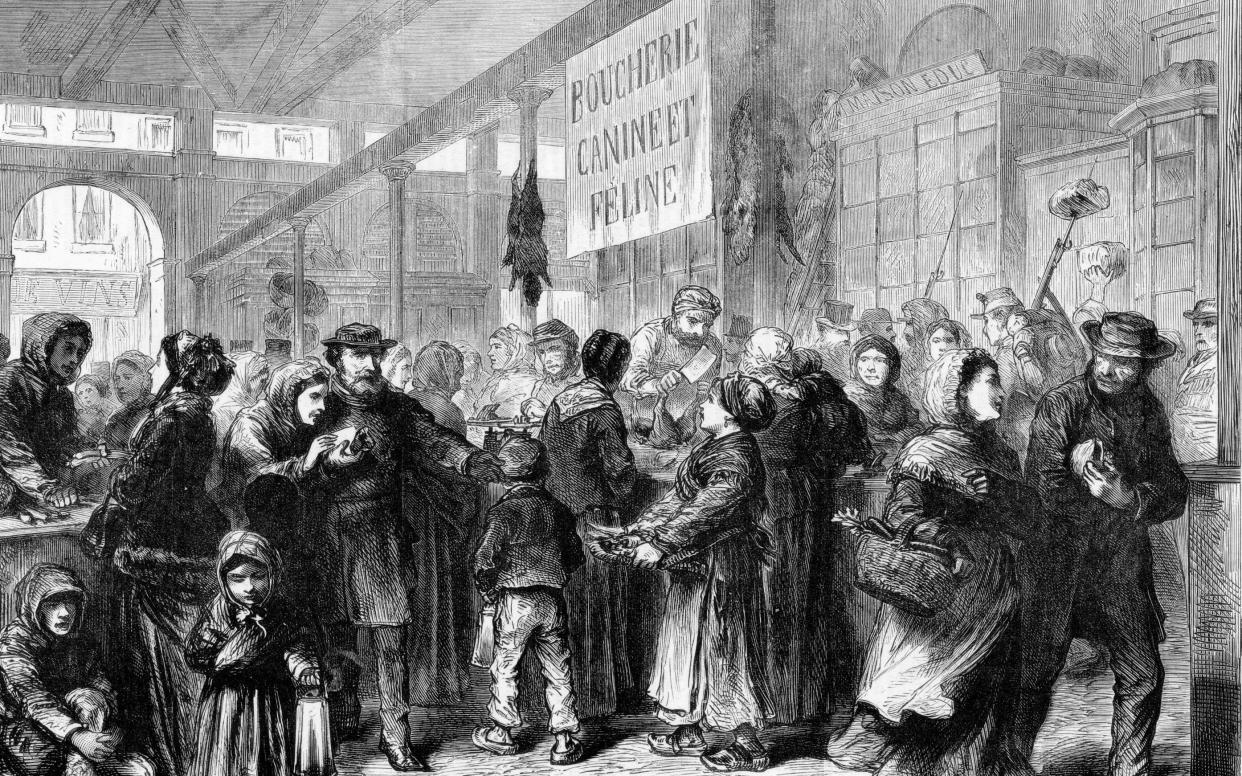
It was 150 years ago this week that Parisians could, at last, look forward to eating something other than cats, rats, dogs and camel rôti à l’anglaise. A ceasefire on January 28, 1871 ended the four-month siege – the last traditional, land-based siege of a major European capital. No longer would Parisian restaurants be serving stewed elephant trunk at 40 francs a pound. Having pushed Paris to the edge, and shelled quite a lot of it, the Prussians had won. The Franco-Prussian war was over.
As European conflicts go, it hadn’t lasted long – some six months – largely because the French, though they declared the war, were catastrophically ill-prepared. They were one war behind the Prussians. The Franco-Prussian tussle is also less well-known than it should be because overshadowed by the greater wars of the 20th century. This needs re-configuring for, in some respects, the 1870/71 clashes laid the groundwork for the later strife. The Franco-Prussian war was instrumental in herding all the disparate bits of Germany – principalities and what have you – into a unified empire dominated by Prussia. Germany became Germany in 1871, thus upsetting a European balance of power which went truly haywire in 1914.
In victory, the Germans also claimed Alsace and the German-speaking slice of Lorraine – not to mention swingeing war indemnities – all of which fuelled a vengeful French desire to have a crack at the Hun when the opportunity next arose.
On a different front, the war also ushered in the Paris Commune, a sort of class civil war which kept the French capital boiling over just when, after the siege, it might have appreciated a breather. The Commune, and its street fighting, remain polarising points of reference in French politics, revered by the left, disdained by the right.
A short war, then, but a significant one. French emperor Napoleon III and Prussian chancellor Bismarck had been spoiling for a fight for a while. Napoleon wanted to underline just what an ace emperor he was, and Bismarck needed an external aggressor to persuade all the German statelets that unification was the way forward.
He manoeuvred Napoleon III into declaring war over the matter of naming the next king of Spain (long story). It wasn’t hard to do, partly because Bismarck was much more deviously intelligent than the Frenchman, partly because Napoleon was (for the time being) immensely popular, sure of victory and of a supportive patriotic fervour. “To Berlin!” was the cry on the streets when war erupted on July 19, 1870.
Things soon went pear-shaped for the disastrously over-confident French. The speed of German mobilisation –railways, telegraph, quick-thinking – astounded the French military. Many aspects of war did. A military historian wrote that the French system “was almost completely effective in excluding the army’s brain power from the staff and high command”.
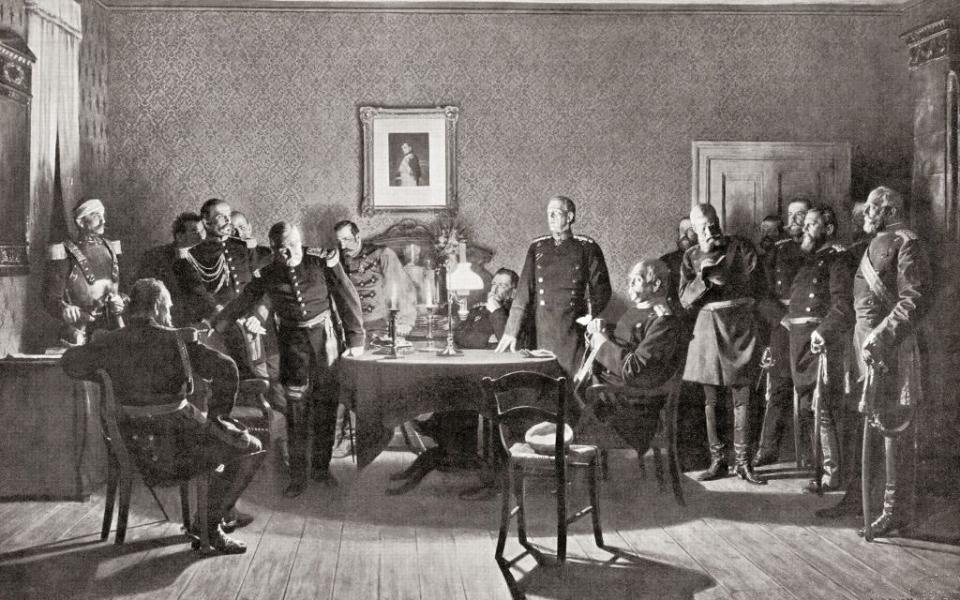
The Germans were in France by August 2. A month later, they’d smitten Napoleon III’s French army at Sedan, near the Belgian border. The emperor’s problems – he wasn’t much of a tactician – were compounded by gallstones so painful that he could barely sit on his horse. He led more than 100,000 French soldiers into captivity.
That should have been the end, but wasn’t. The nation, most notably Paris, was outraged by the shame of the Sedan result. The ever-simmering Parisian mob, encouraged by radical National Guardsmen, stormed the National Assembly (a lot more successfully than the Washington insurgents managed earlier this month). More moderate republicans reacted fast to outflank insurrection. The result was the destitution of Napoleon III, the formation of a Government of National Defence under a fellow called Louis-Jules Trochu and, on September 4, the proclamation of the Third Republic. (Whence, incidentally, all the “Rues du 4 Septembre” in many French towns.)
And the war continued – without, it must be said, much in the way of resounding French success. Only the little citadel town of Bitche in the foothills of the Vosges distinguished itself. Under CO Louis-Casimir Teyssier, it held out for 230 days – long after the rest of France had ceded. The citadel survives and, these days, provides one of the best historical visits in France (citadel-bitche.com). The Third Republic, incidentally, honoured Bitche’s steadfastness with a “Place de Bitche” in Paris 16. The name had to be changed when the square welcomed the US legation. It’s now Places des Etats-Unis.

Back in 1870, the Prussians had taken Versailles, and so had Paris entirely surrounded by September 19. The siege began. Some two million Parisians were defended by surprisingly complete city walls, bastions and outlying forts. Plus around 150,000 regular troops and 200,000 National Guardsmen (NG) of little military use. Drawn from the civilian working population, many NG outfits were ill-disciplined, demanding the right to elect their own officers and discuss orders. They were, in short, Parisian.
Trochu’s government stayed in Paris, but established an outpost in Tours, to keep the rest of the country on side. Radical bigshot Léon Gambetta left Paris to lead the offshoot – travelling by hot-air balloon. This was now the only way out of Paris, and dangerously hit-and-miss. Balloons were not only tempting to Prussian snipers but also, once aloft, went all over the place. Some ended up in the Atlantic, one blew to Norway – thus establishing a balloon distance record for the time – and at least one came down in Bavaria, which was a bit of bad luck.
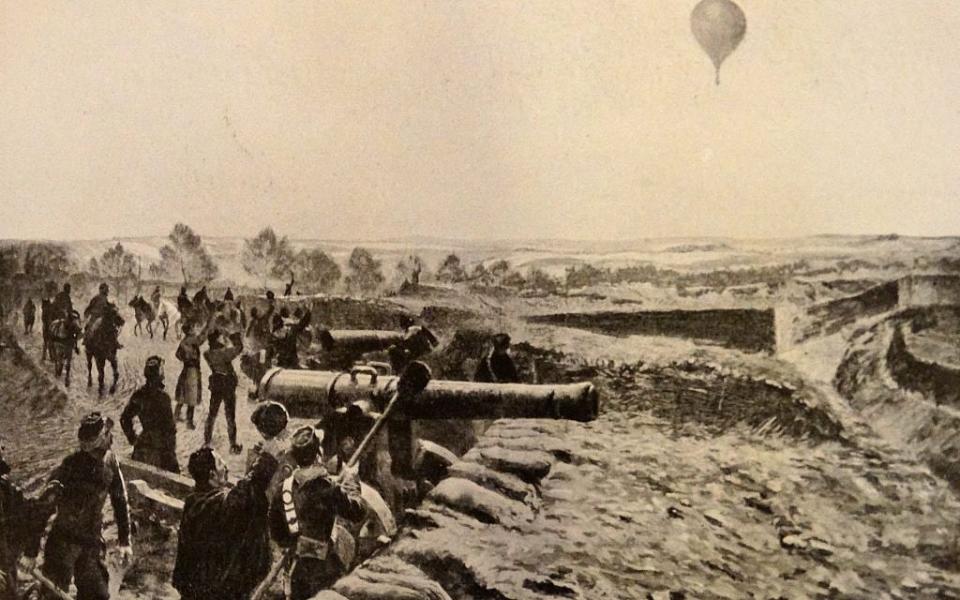
The only way of getting messages into Paris was by pigeon. They’d tried dogs, and floating stuff down the Seine but the Prussians were wise to that. Wise to pigeons, too: they brought Prussian hawks, so that only 50 out of 380 pigeons got through. That said, the French had just discovered micro-film, so each bird might carry 3,000 messages.
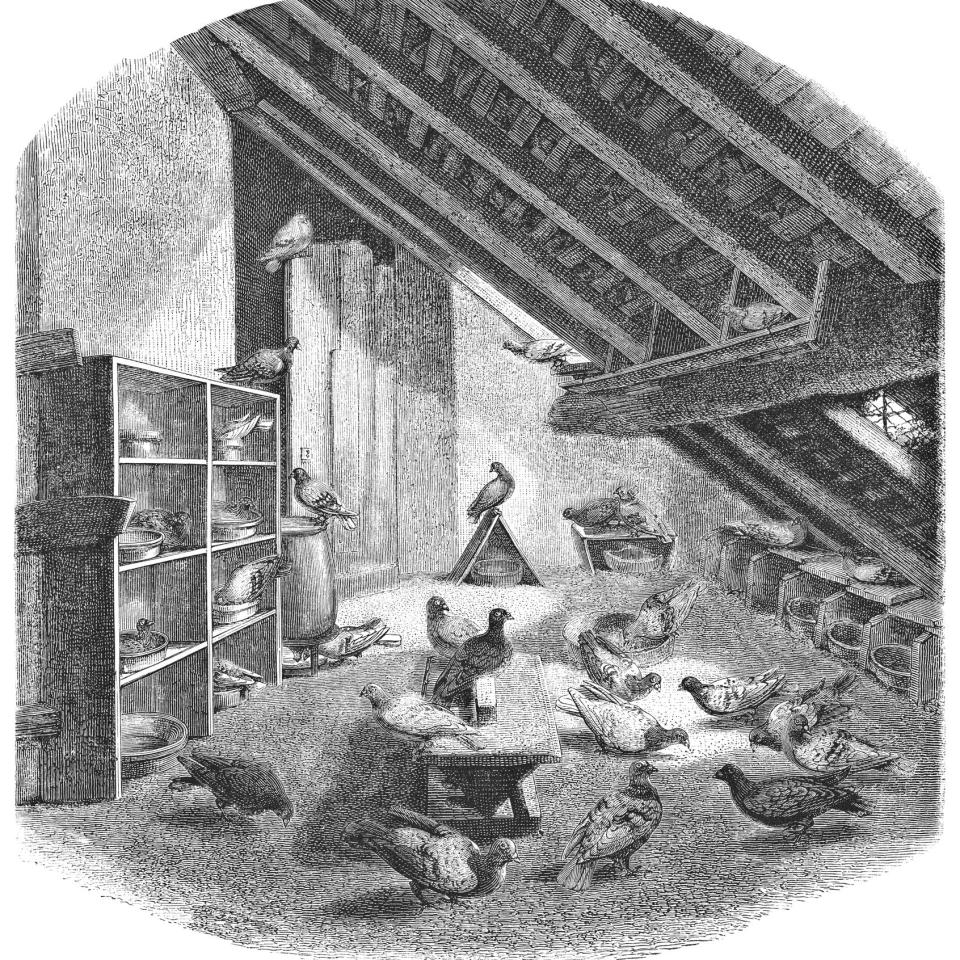
Meanwhile, government troops essayed sorties to try to bust through the Prussian encirclement, with no success – so much so that Parisian radicals, of whom there were thousands, took to the streets, invading places of officialdom. They suspected that Trochu’s lot weren’t really trying, that they’d prefer to capitulate to Prussia rather than ceding a centimetre to the Parisian streets, thus undermining social order. The insurgents were brought to heel, to carry on starving. And freezing.
The tough winter froze the Seine over for three weeks. Fuel was absent, so the trees on the Champs Elysée and other avenues didn’t last long. Market stalls were selling dogs and sparrows, cats and rats – the latter like a “cross between pork and partridge,” said one gourmet. “You really should try water rat stew,” advised another.
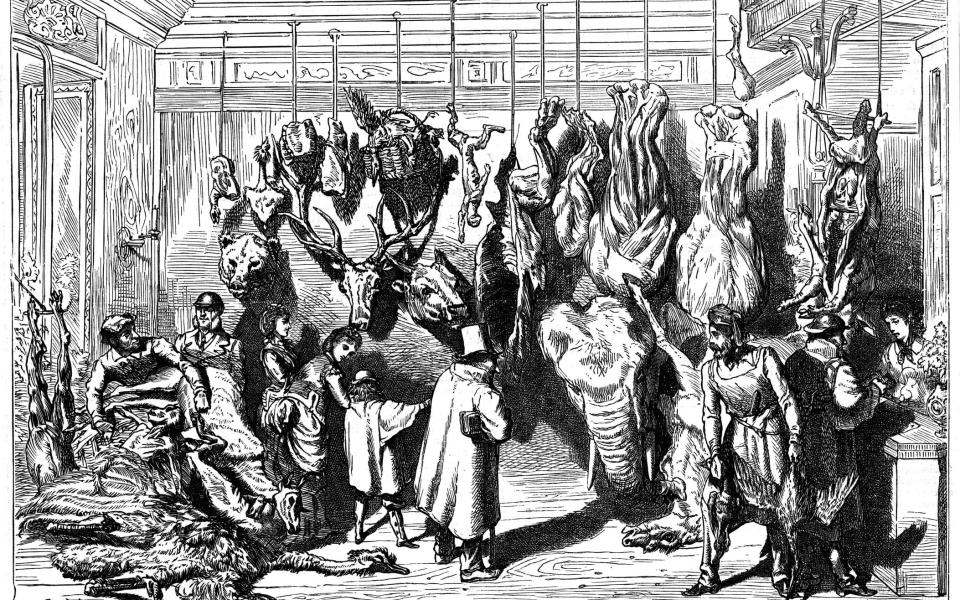
When stocks grew scarce, butchers turned to the Paris zoo. On Christmas Day 1870, at the celebrated Restaurant Voisin on Rue St Honoré – frequented in normal times by the Prince of Wales, and writers Zola and Daudet – chef Alexandre Choron served stuffed head of donkey, elephant consommé, bear shanks in pepper sauce, “cat with rat”, and camel roasted, English fashion. (If you know the English fashion for roasting camel, please share.)
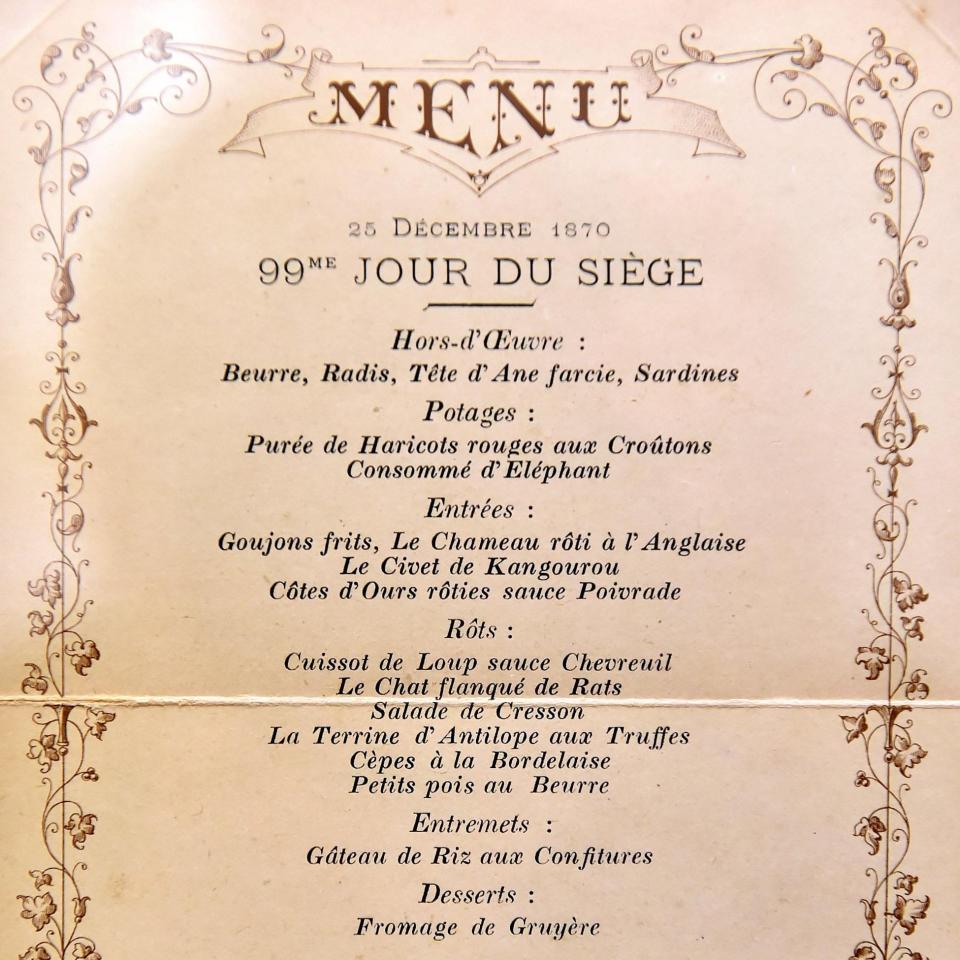
By now, Prussian patience was wearing thin. Paris was taking too long to starve into submission. The Prussians began shelling the French capital from the (relative) heights around. They continued through January 1871. On January 22, Trochu resigned to be replaced as French leader by the diminutive Adolphe Thiers. Another conservative republican, Thiers had an eventful private life, including marriage to his mistress’ daughter. It is alleged that he also had an affair with his mistress’s second daughter, thus his wife’s sister. Until quite recently, this kind of carry-on didn’t hinder a French political career.
At any event, the Thiers-led government was realistic enough to negotiate an armistice with the Prussians – in the teeth of Parisian street anger – on January 28. They now had the leisure to contemplate the formalisation of German unification which had, 10 days earlier, been signed in the Hall of Mirrors of the Palace of Versailles: a killer blow to French pride, if ever there was one. Not that great for Europe’s immediate future, either.
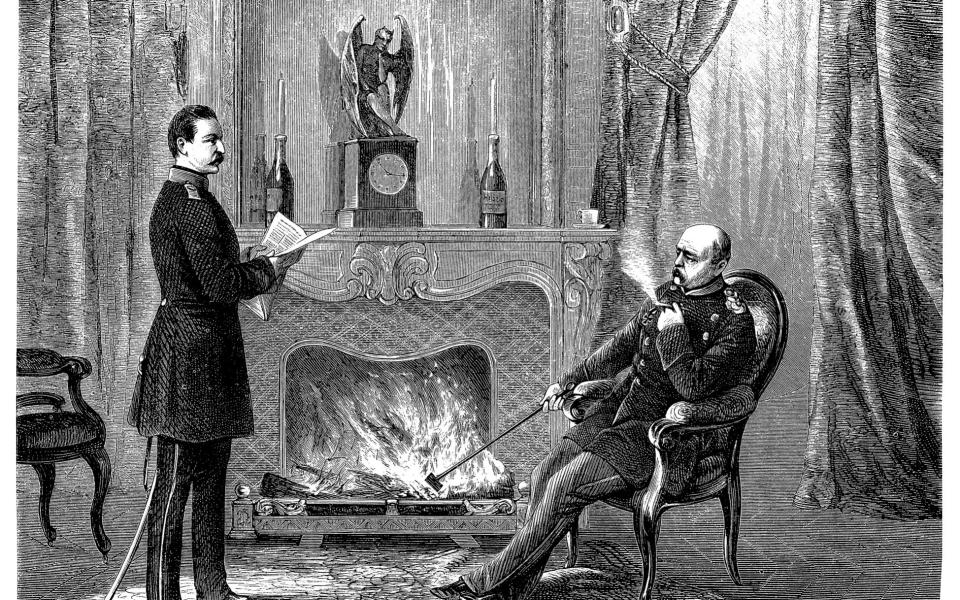
But the government’s most pressing concern was the possibility of social upheaval within a Paris markedly more radical, indeed revolutionary, than the rural, Catholic, conservative country beyond. Thus the Thiers government, now at peace with Prussia and headquartered at Versailles, sent regular troops into Paris to disarm the militant National Guard (NG), firstly by confiscating 227 cannons on the hill of Montmartre. The merde hit the fan. Parisians, furious at the humiliation of the Prussian defeat weren’t about to give up artillery paid for with their money. Rioting broke out. Regular soldiers deserted to the NG side. Two generals were shot and strung up.
Thiers ordered loyal regular troops and civil servants out of Paris. The capital was in the hands of the seditious. Municipal elections on March 26 returned a ragtag Paris council of Jacobins, Proudhonists, associated anarchists and utopians, socialists, a vet, a brothel owner and a legendary drunk. Two days later, they declared a Commune. No-one really knew what this meant. It looked very much like an example of the Parisian tendency to kick over everything in the name of le peuple – usually led by rogues, alcoholics and fledgeling totalitarians – and then see what happened. Thus, as Paris emerged from a foreign war, it headed directly into a civil conflict.
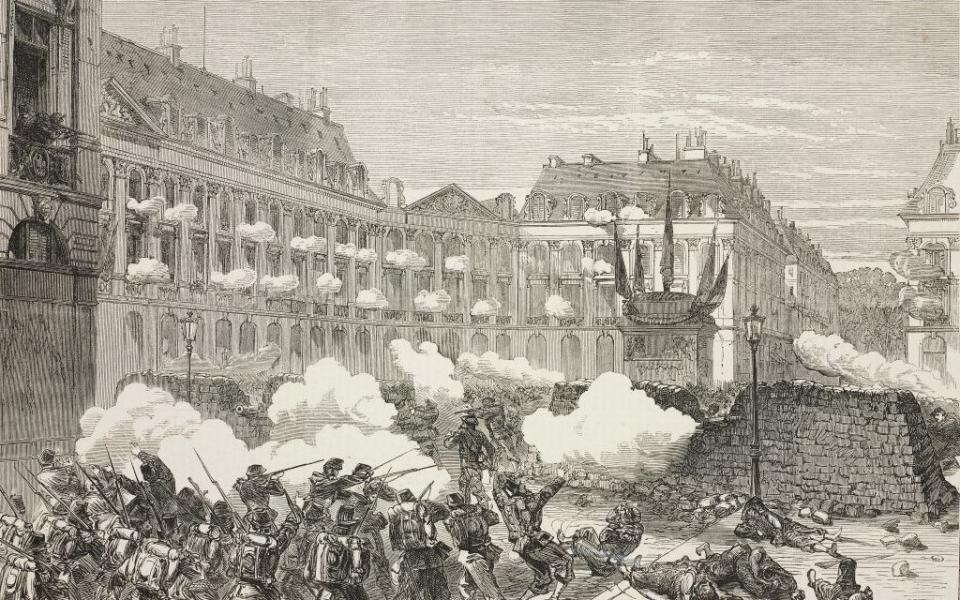
Long story short (or short-ish): though it came up with some notable social reforms – 10-hour working day, free schooling for boys and girls, separation of church and state – the Commune was, in military and organisational terms, hopeless. Marx might have considered it an early example of the dictatorship of the proletariat (Lenin’s tomb is, incidentally, still decorated with a red banner from the Commune), others were less impressed. “This Commune is as idiotic as the National Assembly is ferocious,” said Victor Hugo, who lived through the whole saga. Anatole France let rip: “A committee of assassins, a band of hooligans, a government of crime and madness” was his verdict.
Certainly, much of Paris was carousing, and drunk, after a music festival on May 21 when troops of the Versailles government slipped in and began to retake the city. Thus started the Semaine Sanglante, the Bloody Week. Barricades proved ineffective, as did the communards’ policy of torching great buildings like the Tuileries Palace. The communards killed hostages, including the Archbishop of Paris, and Versailles government troops killed communards – maybe 6,500 in all. It ended in hand-to-hand fighting around the tombs of the Père Lachaise cemetery. The regular troops won, put the 147 surviving communards against a wall and shot them. The Mur des Fédérés may still be seen in the cemetery.

By now, many communards had already fled, not least to London. Thousands of others were tried and imprisoned, condemned to hard labour or, like Louise Michel, the firebrand Red Virgin of Montmartre, transported to antipodean colonies. Most were later amnestied. Thus, 150 years ago, the brand new Third Republic both lost its authority and then reasserted it. France staggered on towards the Belle Epoque.
Where to see relics of the siege
Given the importance of the events, there’s surprisingly little to see in Paris which evokes either the siege or the Commune.
Siege-wise, we should mention Montmartre’s Sacré-Coeur basilica – planned not (as many guides claim) as penitence for the godlessness of the Commune but rather to expiate the long-term moral failings which Catholics felt were responsible for the preceding Prussian defeat. The church remains a monstrosity, mind.
Best coverage of the Commune is at the Musée d’Art et Histoire in St Denis. They lay on guided visits of the museum and of Montmartre as epicentre of the Commune. On February 11 at 6.30pm, they’re also holding a virtual zoom conference on the siege and Paris commune, for £5.30. See exploreparis.com for all these, though they’re for French speakers only.
Among the best guided walks for English-speakers is Peter and Oriel Caine’s long-established Paris Walks (paris-walks.com). Many of their itineraries include siege and commune sites. They’ll also tailor-make routes.

